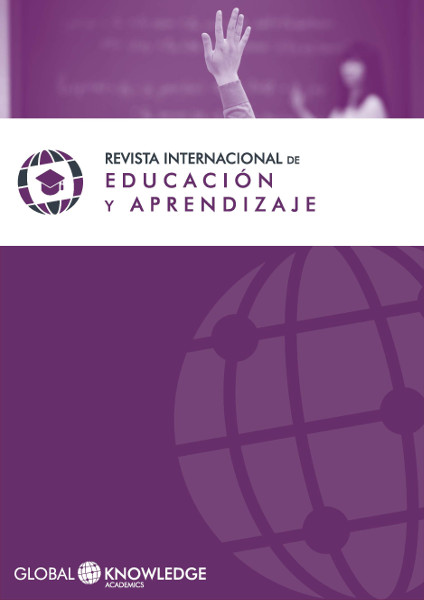Classrooms for Life or Lives that Build New Classrooms
DOI:
https://doi.org/10.37467/gka-revedu.v2.613Keywords:
Environment, Connection, Solidarity, Tools, MöbiousAbstract
Boasso teaches that Man is a spiritual being in Tension, Situation and Relation. The “School Environment”: the invisible architecture that is the framework for the “small” personal structures to become a construction of intersubjectivities, is worth analysing from the perspective of its complexity and the verification of a series of analytical categories such as: the joint construction of environments, tools and assistances for mediated action, alienation in the school environment, the webs of personal connections, and so forth. The first ones, fundamentally, forms the guidelines of this paper which seeks to investigate the construction of the environments in which we perform our sometimes spoiled task, and also the power held by these valid tools in these new times. Classrooms that repeatedly become Babels and we need to rebuild as new Agoras, where differences in ideologies, perspectives, expressions and generations do not separate us.
Downloads
Global Statistics ℹ️
|
377
Views
|
169
Downloads
|
|
546
Total
|
|
References
Aguerrondo, Inés (2005). Conferencia: Innovación, escuela y sistema educativo. El reto de la articulación entre niveles. Universidad de San Andrés. Argentina
Baquero, Ricardo & Terigi, Flavia (1996). “En busca de una unidad de análisis del aprendizaje escolar”. Apuntes Pedagógicos nº 2 UTE/CTERA. Dossier. Bs. As.
Baumann, Zigmunt (2000). La modernidad Líquida. España: Gedisa.
Boasso, Fernando (1965). El misterio del hombre. Bs. As.: Ed. Guadalupe. Dussel, Inés & Caruso, Marcelo. (2003). La invención del aula. Una genealogía de enseñar . Buenos Aires: Santillana.
Freire, Paulo (2008). Cartas a quien pretende enseñar. Argentina: Ed. Siglo XXI.
Foucault, Michel. (1980). La verdad y las formas jurídicas. Barcelona: Gedisa.
Foucault, Michel. (1975). Vigilar y castigar. México: Siglo XXI.
Foucault, Michel. (1979). La microfísica del poder. Madrid: Ed. De la piqueta.
Gansel, Dennis & Jones, Ron. (2008). La Ola. Alemania: Rat Pack Filmproduktion.
Jackson, P. (2001). La vida en las aulas. Morata: Morata
Martí, José (1884). Maestros ambulantes. Disponible en: www.jose -marti.org. Febrero 2012.
Percia, Marcelo (2000). Tutoría y coordinación de grupos de aprendizaje. Buenos Aires: Unq.
Rilke, Rainer María (1963). Cartas a un joven poeta. Buenos Aires: Ed. Siglo XX
Rodrigo, María José (1997). “El hombre de la calle, el científico y el alumno: ¿Un solo constructivismo o tres?” Novedades Educativas 76, pp. 59.
Rodriguez Arocho, Wanda. “Los conceptos de vivencia y situación social del desarrollo: Reflexiones en torno a su lugar en el modelo teórico de Lev S. Vygotski”. Conferencia Magistral en el IIIº Simposio sobre Tutoría para el Desarrollo Humano. Universidad de Nueva León. México. 2009
Rogoff, Bárbara. (1997). “Los tres planos de la actividad sociocultural”. En La mente sociocultural, Wertsch, J et al ., pp. 111-126. Madrid: Fundación Infancia y aprendizaje.
Savater, Fernando (2008). El valor de educar. Barcelona: Ariel.
Trilla, Jaume. (1999). Ensayos sobre la escuela. España: Laertes.
Varela, Francisco. (2000). El fenómeno de la vida . Barcelona: Ed. Norma.
Wertsch, James. (1999). La mente en acción. Bs. As.: Aique. Bs. As.
Downloads
Published
How to Cite
Issue
Section
License
Those authors who publish in this journal accept the following terms:
-
Authors retain copyright.
-
Authors transfer to the journal the right of first publication. The journal also owns the publishing rights.
-
All published contents are governed by an Attribution-NoDerivatives 4.0 International License.
Access the informative version and legal text of the license. By virtue of this, third parties are allowed to use what is published as long as they mention the authorship of the work and the first publication in this journal. If you transform the material, you may not distribute the modified work. -
Authors may make other independent and additional contractual arrangements for non-exclusive distribution of the version of the article published in this journal (e.g., inclusion in an institutional repository or publication in a book) as long as they clearly indicate that the work was first published in this journal.
- Authors are allowed and recommended to publish their work on the Internet (for example on institutional and personal websites), following the publication of, and referencing the journal, as this could lead to constructive exchanges and a more extensive and quick circulation of published works (see The Effect of Open Access).













